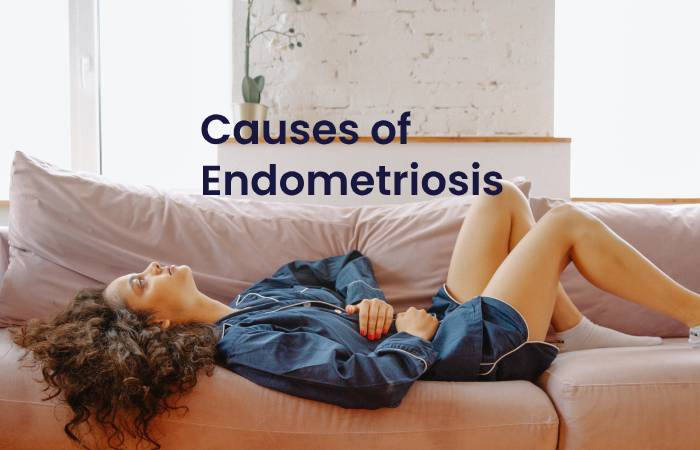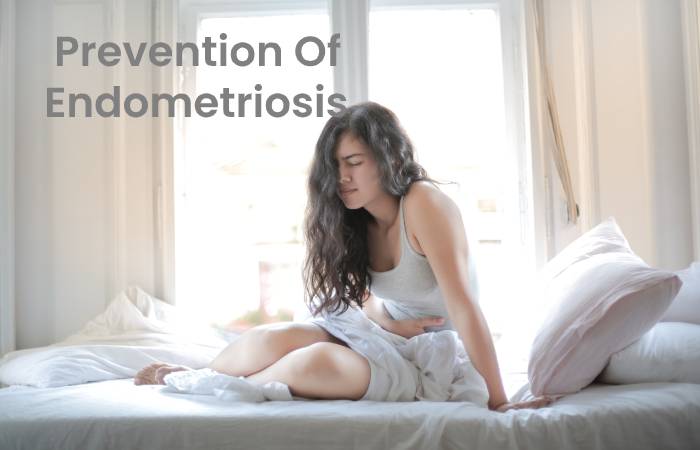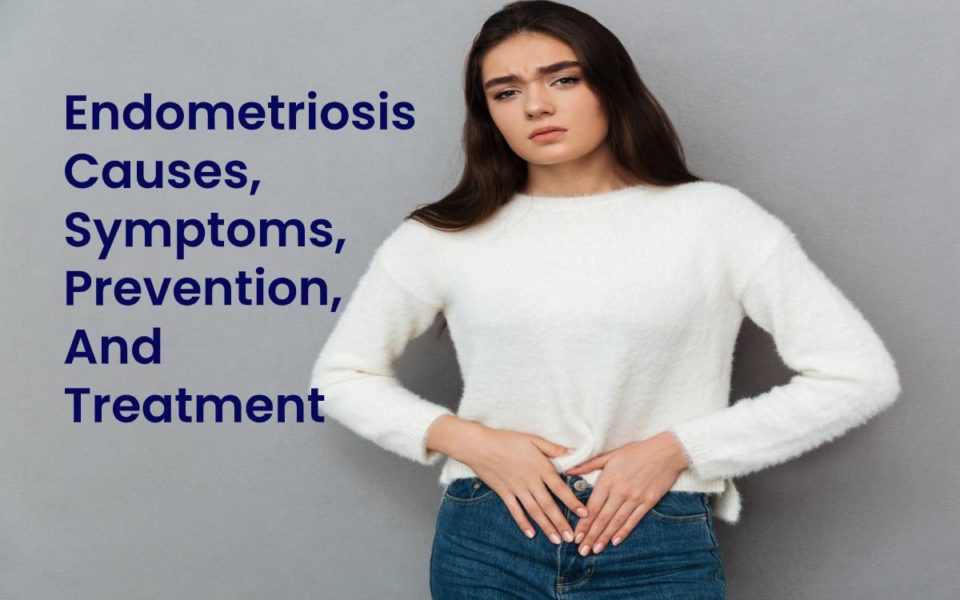The endometriosis is the presence of endometrial tissue outside the uterus. Endometriosis are found in the pelvic area (above the peritoneum, ovaries, intestine, or bladder). However, less often, they can be found in other areas, such as the skin or lungs. These foci develop due to the hormones of the menstrual cycle evolve cyclically and bleed.
Table of Contents.
This pathology evolves unpredictably. In some cases, the patient has tissues outside the uterus that do not grow, while in others, they can develop more extensively.
It characterizes by being an inflammatory disease so that it can cause adhesions between organs.
Also, this condition can present different degrees:
- Minimal or stage I: occurs when there are isolated and non-adherent implants.
- Mild or stage II: There are superficial implants attached or spread on the surface of the peritoneum and ovaries.
- Moderate or stage III: multiple implants will present that will characterize by being superficial or invasive. There are adhesions around the fallopian tubes or ovary.
- Severe or stage IV: in this degree of the disease, the implants are multiple and intense, in addition to producing large cysts and adhesions with the large membranes.
Causes of Endometriosis

The exact causes of endometriosis are not known but, according to specialists, one of the options by which it can occur is that, when a woman has her period, a retrograde flow develops, through which the cells, through the Fallopian tubes, may return to the pelvis.
Once found there, they become fixed and multiply, causing endometriosis. Concerning this cause, some researchers assure that it may be due to failures in the immune system of women. However, it is a hypothesis that is under investigation.
Endometriosis is a pathology that, in some cases, is hereditary, that is, it can be transmitted from mothers to daughters and probably begins when the woman starts having menstrual periods.
There are also risk factors that increase the chances of suffering from this condition:
- The patient has a mother or sister who suffers from this disease or has never had children.
- The onset of menstrual periods has occurred at an early age, and these characters by being frequent and lasting seven days or more.
- Having the hymen close can also block menstrual flow during the period.
Symptoms Of Endometriosis
The manifestations of this disease divide into four groups:
- Menstrual pain ( dysmenorrhea): It is one of the main symptoms in this condition and appears a few months after the first menstrual period.
This pain increases progressively over time and is usually due to the formation of prostaglandins, which are the cause of muscular uterine contractions. - Pain in sexual intercourse (dyspareunia):due to vaginal penetration, some areas that affect by endometriosis can be pressed, such as the ovaries, vaginal ceiling, or uterosacral ligaments.
- Abnormal uterine bleeding: In many cases, abnormal bleeding does not occur outside the cycles, but in some cases, these can alter and generate bleeding outside the periods.
- Reproductive problems: these are not frequent but, in some women, sterility or infertility can occur, and they turn out to be pathologies that allow diagnosing endometriosis.
This infertility can cause inflammation in the abdomen that prevents the egg from joining with the normal sperm movement of the tubes or ovulation, such as adhesions or tissue in the ovaries.
Women with this condition have an increased risk of miscarriage, a problem that decreases when the disease will cure.
Prevention Of Endometriosis

There are no preventive measures that can prevent the development of endometriosis. However, treatment with contraceptives can help prevent or delay this pathology. Treating endometriosis with contraceptives can help prevent it.
Types
Within the endometriosis classification, there are three types:
- Peritoneal endometriosis: This type presents superficial lesions in the ovaries or the peritoneal serosa. However, infrequently, red or vesicular or white lesions can also be formed, including areas of fibrosis and scarring.
- Ovarian endometriosis: These types of cysts that contain thick fluid often form adhesions with the peritoneum of the ovarian fossa, tubes, and intestine.
- Deep endometriosis: It is the most severe form of the pathology, and in it, nodules have formed that effect, above all, the area of the uterine-sacral ligaments. However, it can reach the ureters, the intestine, and the bladder.
Diagnosis
To detect the disease, specialists have various procedures. First, a physical exam will perform that will include the pelvis to detect the presence of tissues in the areas outside the uterus.
In addition, two tests will perform to arriving at a more accurate diagnosis of the condition:
- Transvaginal ultrasound— it use to examine a woman’s genitalia, including the uterus, ovaries, and cervix. It can check by putting the ultrasound probe inside the vagina.
- Pelvic laparoscopy: This procedure allows the specialist to directly visualize the contents of the patient’s abdomen and pelvis.
Treatments Of Endometriosis

The treatment applied to this condition will depend on the symptoms that the patient presents, the will to become pregnant, the age and the extent of the disease, which means that each case must treat individually.
Therapeutic options make symptoms disappear in most cases and include hormonal therapy, analgesia (treatment to eradicate pain), and surgical methods. When it comes to pain relievers, specialists recommend carrying out relaxation techniques to manage pain.
Also, periodic examinations are necessary to check the development of the condition.
Regarding hormone therapy, treatment with contraceptives, progesterone injections, which help in preventing the development of tumors and the ovaries from producing estrogen.
Finally, the techniques used from the surgery will reduce to:
- Laparoscopy: This can remove areas of endometriosis and scar tissue.
- Laparotomy: This consists of an incision in the abdomen to remove the areas of endometriosis.
- Hysterectomy: It is the most invasive surgery since it removes the uterus, the tubes, and the ovaries. Treatment will apply if the patient has severe symptoms and does not want to have children in the future.
Other data
Endometriosis can impede getting pregnant. But, in most women, the symptoms are mild and, therefore, this problem does not affect them.
In these cases, treatment involving laparoscopy that removes tumors and scar tissue can help improve the chances of getting pregnant.
Other complications severe pelvic pain that prevents normal social and work activities or cysts that can rupture. In the latter case, the tissue released in endometriosis can cause blockages in the intestines or urinary tract.


